Mini Interview: Mary Iverson (Project Space Exclusive)
Mary Iverson is back in the Shooting Gallery‘s Project Space for her solo show Tangle, opening this Saturday April 13. Iverson is known for her op-art grids, representing shipping containers and their expansive trajectories, superimposed on naturalistic landscapes. The artist answered our questions about the geo-political impact of the shipping industry, her technical range of painting, and how ‘ugly’ representations can also portray beauty.
Tangle, by Mary Iverson
Opening Reception – April 13, 2025, 7-11 pm
On View Through May 04, 2025
@ Shooting Gallery Project Space (shootinggallerysf.com)
886 Geary Street, San Francisco CA 94109
Don’t forget to RSVP!
View the interview and more images of Iverson’s work, after the jump.
Is the superimposed, industrial grid meant to be an aesthetically pleasing component, or does it solely express a jarring interruption of nature’s pristine symmetry?
My original intention was for the grid to be a violation of or an intrusion upon the landscape. However, because of the inherent beauty in precision and symmetry, plus the colors and forms of the containers, the grid presents itself as beautiful. This sets up an ambiguous aspect to the combination that I really like: “it’s beautiful/it’s ugly.”
How many ‘perspective points’ and planes can you have in any one painting?
There can be an infinite number of vanishing points on one horizon line.
Containers are an intriguing emblem of industry. The irony of shipping containers is that despite how massive they are, their presence is virtually invisible to people who don’t live in cities with active ports, or who live anywhere mainland. What have you found so powerful about this symbol to include it as an image, as well as a source of geo-political commentary?
The container is like a poker chip. The number of containers in a stack represents the viability of our economy and the amount that the capitalist system can wager against the needs of a growing population and the stress the environment can bear. When I read annual reports from various ports, they talk about container volumes in the millions (5.5 million for the Port of New York/New Jersey in 2025), and they project that container volumes will continue to increase. A lot of people don’t notice containers, or they see them occasionally on a passing train or truck. My work illustrates the reality of containers and their immense numbers, and I hope that it increases awareness about the immensity of global trade.
There is an ominous tension in your work depicted through two aspects: the selection of actual virgin landscape for your backdrops, and the line work emanating from the containers. By choosing real landscapes unmarred by industrialization, the grid appears as a threatening encroachment– almost like perspective groundwork for development. Are these works harbingers of environmental destruction? What type of reaction, or purposeful rumination, do wish you to evoke in your audience?
My works are definitely harbingers of destruction because, at the rate our economy is expanding, it is inevitable that the environment will become more stressed. We see the effects already, through changes in the atmosphere and in the chemicals present in groundwater, through wildlife migration routes being blocked by interstates and developments, and through the increase in significant storm events such as hurricanes Sandy and Katrina, increased tornados in cities that weren’t tornado-prone before, and the increased incidence of so-called100-year floods. My intention is for the viewer to recognize that our pristine lands are threatened by our expanding economy.
The containers are depicted as suspended abstractions amidst natural realism – both devices seem to yield two entirely different types of painting in one work. Are the painting processes that create the natural landscape and modernist geometry very dissimilar from one another?
The landscape portions of my oil paintings are created using classical painting techniques; I begin with a monochromatic underpainting, then work the color up through a multitude of glazes. The containers are painted over top of the glazes with solid, thick paint, which is a more modern technique that can be traced back to the post-impressionists. This combination of the classical with the modern supports the ideas behind my work, encouraging the viewer to further question the coexistence of natural history and industrial innovation.
Read more about the artist’s work in our interview with Mary Iverson from last year here.


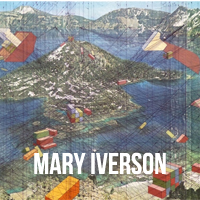
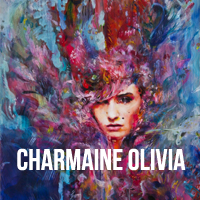
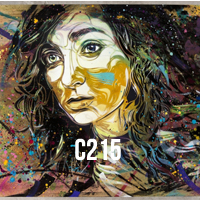
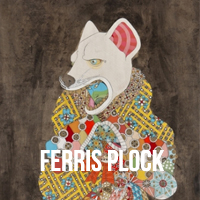
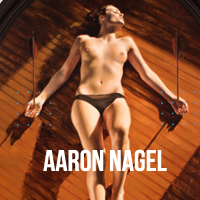
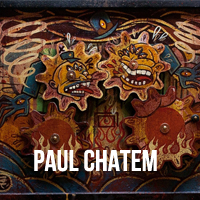
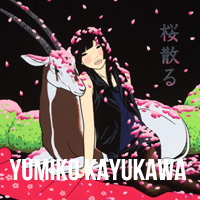
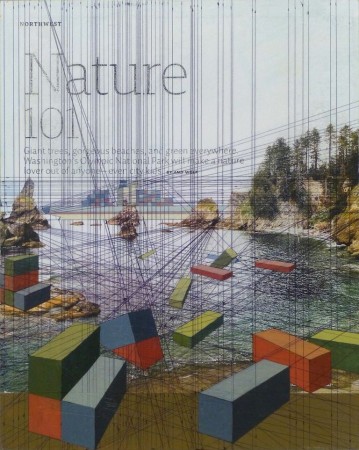
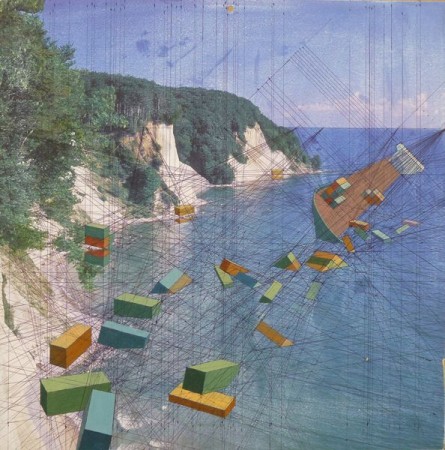
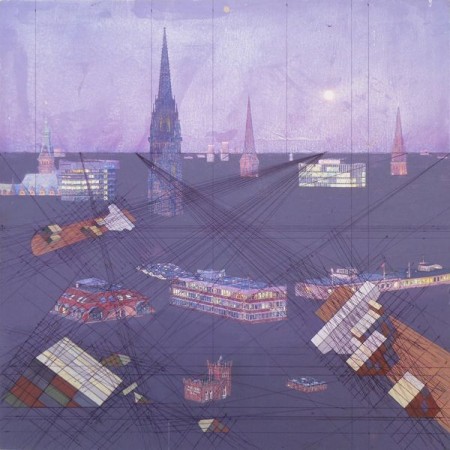

[...] artist ever has before with an 8 x 14 foot canvas mural. In the smaller scale work, Iverson pitches nature vs industrial sprawl in elegant compositions with beautiful landscapes in [...]
Every weekend i used to pay a visit this site, as i wish for enjoyment, as this this website conations really nice funny stuff too.